Effective DIY Water Filtration Techniques for Clean Water Access
Constructing a Sand and Charcoal Water Filter
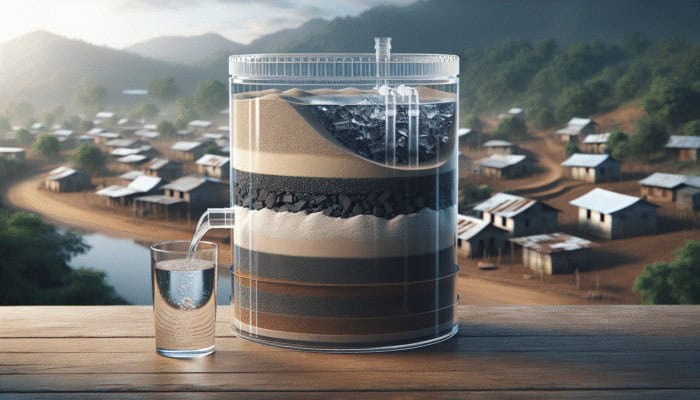
Water Filter Hacks: Building a straightforward water filtration system using sand and charcoal is an outstanding method to enhance water quality. This filtration technique is not only accessible but also requires minimal materials, making it ideal for a variety of locations around the globe. For example, individuals in rural communities can greatly benefit from creating a sand and charcoal filter, as it can substantially improve their access to clean drinking water, which is essential for health and well-being.
To construct this filter, begin with a clean container like a bucket or a large plastic bottle. At the base, layer small stones or gravel to facilitate proper drainage. Next, incorporate a layer of activated charcoal, which is excellent for adsorbing pollutants, odours, and harmful chemicals. Following the charcoal, add a fine sand layer, effectively capturing larger particles. Finally, conclude with another gravel layer to prevent the sand from washing away during filtration, ensuring the filter remains efficient.
Once your filter is fully assembled, pour unfiltered water into the container, allowing it to percolate through the various layers. As the water trickles down, impurities will be trapped, resulting in clearer water. However, it’s important to note that sand and charcoal filters can significantly reduce contaminants, but they may not eliminate all pathogens. Therefore, it is advisable to complement this method with additional purification techniques, such as boiling or chemical treatments, to enhance safety and ensure the water is safe for consumption.
Utilising Ceramic Pots for Effective Water Filtration
Using ceramic pots for water filtration is a well-established technique that has proven effective across many cultures and regions. This method takes advantage of ceramics' porous nature to filter out harmful bacteria and sediments from water. It is particularly advantageous in areas with limited access to sophisticated water purification systems, providing a sustainable solution for communities.
To create a ceramic pot filter, first obtain a water storage clay pot, which can often be sourced from local markets worldwide. The porous ceramic material acts as a natural barrier, allowing water to seep through while trapping larger particles and harmful microorganisms. This method is cost-effective and promotes sustainability since ceramic pots can be reused for years with proper maintenance and care, providing ongoing access to cleaner water.
For optimal performance, the ceramic filter must be maintained by being cleaned regularly. This can be achieved by scrubbing the exterior with a brush to prevent the buildup of contaminants. Additionally, allowing the pot to dry in the sun can help eliminate lingering pathogens. By adopting this simple yet effective filtration method, communities globally can enjoy improved access to cleaner drinking water without complex technology or expensive systems.
Using Cloth as a Quick Filtration Technique
Employing a piece of cloth to filter water is a rapid and efficient method that has been practiced for centuries. This technique is especially effective for removing larger particles such as dirt, sand, and debris, making it an ideal first step in water purification. It showcases the ingenuity of using everyday materials to enhance water quality in various situations.
To execute this method, select a clean, fine cloth, such as cheesecloth or a cotton handkerchief. Position the cloth over a clean container or bucket and gradually pour the unfiltered water. As the water passes through the fabric, larger impurities are caught, leaving behind visibly clearer water. This technique proves particularly beneficial for hikers, campers, and those in emergencies who may require rapid water purification solutions.
It’s crucial to remember that while cloth filtration effectively removes visible contaminants, it does not eliminate microorganisms. Therefore, it should be followed by additional purification methods, such as boiling or chemical treatment, to ensure the water is safe for drinking. This simple yet ingenious approach highlights the potential of utilising common materials to enhance water quality significantly.
Strategies for Maximising Water Filter Efficiency
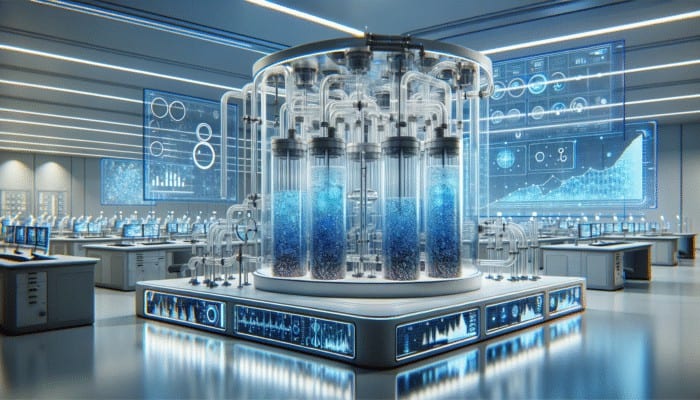
Boosting Filtration Efficiency with Coffee Filters
If you're seeking ways to enhance the efficiency of your water filtration system, incorporating coffee filters as a pre-filtering step can yield remarkable results. These readily available filters are designed to trap fine particles, thereby improving the overall cleanliness and quality of the water you collect. This additional layer of filtration is an effective strategy for ensuring cleaner water.
To effectively use coffee filters, position them over your filtration system, whether it’s a DIY sand filter or a ceramic pot setup. By first pouring water through the coffee filter, you can eliminate smaller particles that might otherwise clog the main filtration layer. This additional step not only aids in achieving cleaner water but also prolongs the lifespan of your primary filter components, making it a smart addition to any filtration setup.
This method is particularly useful for outdoor enthusiasts encountering muddy or sediment-heavy water sources. By pre-filtering the water, you ensure that your more advanced filters aren’t compromised quickly, thus maintaining their effectiveness. Furthermore, coffee filters are lightweight and portable, making them an ideal addition to any camping or hiking gear. This allows adventurers to consistently access clean drinking water.
Enhancing Filtration with Activated Carbon
Integrating activated carbon into your water filtration system is one of today's most effective water filter hacks. Activated carbon is renowned for its remarkable ability to adsorb impurities, odours, and harmful chemicals, making it a powerful ally in the quest for clean drinking water. Its versatility and effectiveness make it an invaluable component of many filtration systems.
Incorporating activated carbon is straightforward. Simply layer it within your existing filtration setup, perhaps between layers of sand and gravel. As water passes through, the activated carbon diligently traps contaminants, thereby enhancing the water's taste and smell. This method is effective and sustainable, as activated carbon can be regenerated through simple rinsing techniques, allowing for extended use without the need for constant replacement.
Communities facing challenges from industrial pollution or agricultural runoff can particularly benefit from activated carbon filtration. By utilising this method, individuals can significantly reduce harmful substances in their water supply, fostering a healthier living environment. This powerful hack demonstrates how accessible materials can drastically improve drinking water's safety and quality, benefiting individuals and communities alike.
The Importance of Regular Filter Maintenance
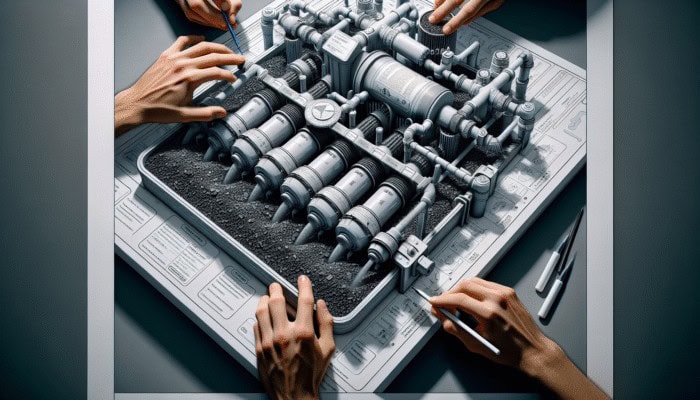
Regular maintenance is paramount to ensuring the long-term effectiveness of your water filtration system. Neglecting to care for your filters can lead to reduced performance, potential contamination, and even health risks associated with unsafe drinking water. By prioritising maintenance, users can significantly enhance the efficacy and lifespan of their filtration systems.
Begin by routinely inspecting your filter components, checking for any signs of wear, clogs, or damage that may compromise their functionality. Cleaning intervals may vary depending on the type of filter you use; however, a general guideline is to clean or replace components every few weeks. For example, when using a sand and charcoal filter, periodically replacing the charcoal and rinsing the sand can help maintain optimal filtration efficiency and ensure safe drinking water.
Educating users about maintenance is crucial, especially in communities relying on these methods for safe drinking water. Regular upkeep enhances the filter's lifespan and assures users of the water quality they consume. By emphasising the significance of maintenance, you empower yourself and your community to enjoy cleaner, safer water for years to come.
Natural Techniques for Water Purification
Utilising Solar Water Disinfection for Safe Drinking Water
Harnessing the sun's natural power through solar water disinfection (SODIS) presents a simple yet effective method for purifying water. This technique employs UV radiation to kill harmful pathogens, making it a viable option for individuals in sunny regions or during outdoor adventures. By leveraging renewable energy, SODIS offers an environmentally friendly approach to water purification.
To implement SODIS, clear bottles with contaminated water are filled with it and placed in direct sunlight for at least six hours. The UV rays penetrate the water, effectively neutralising harmful microorganisms that pose health threats. This method is energy-efficient and cost-effective, requiring minimal resources beyond sunlight and clean containers, making it accessible to communities worldwide.
Solar water disinfection is an accessible solution for communities lacking reliable access to clean water. For instance, in areas affected by natural disasters or those with limited infrastructure, SODIS can be a lifesaver. By promoting awareness of this technique, individuals can significantly improve their water quality using the sun's energy, fostering better health outcomes and resilience in vulnerable communities.
Boiling Water: A Time-Tested Method for Purity
Boiling water is a time-tested method for ensuring purity, effectively killing bacteria, viruses, and parasites that can compromise health. This method is universally recognised and can be applied in various settings. It is an essential technique for anyone seeking clean drinking water, particularly in emergencies or during travel in remote areas.
To purify water through boiling, bring it to a rolling boil for at least one minute. At elevations above 6,500 feet, extend the boiling time to three minutes to effectively eliminate all pathogens. This method is especially useful when access to advanced filtration systems is limited, providing a reliable option for ensuring safe drinking water.
While boiling is practical, allowing the water to cool before consumption is crucial. Also, boiling does not remove chemical contaminants, so it’s best used with other filtration methods for comprehensive safety. This straightforward yet powerful approach to water purification highlights the importance of utilising accessible techniques in the quest for clean and safe drinking water.
Exploring Plant-Based Water Purification Solutions
Investigating the use of certain plants for natural water purification offers an innovative angle in the realm of water filter hacks. One particularly notable example is Moringa seeds, which have been shown to possess coagulating properties that can effectively clarify water. This method harnesses the power of nature to provide sustainable solutions to water quality issues.
When crushed and mixed with contaminated water, Moringa seeds release natural coagulants that bind to impurities and bacteria, causing them to settle at the bottom of the container. After allowing the mixture to stand for a few hours, the clearer water can be siphoned off for drinking. This method is effective and sustainable, promoting environmental health while improving water quality.
This plant-based solution can significantly benefit communities in tropical regions where Moringa trees are abundant. By educating residents on the uses of Moringa seeds for water purification, communities can reduce reliance on conventional filtration methods and promote environmentally friendly and effective practices. This approach showcases the potential of integrating natural resources into water purification strategies.
Portable Water Filtration Solutions for Travellers
LifeStraw: The Ultimate Portable Water Filter
For outdoor enthusiasts and travellers, the LifeStraw has revolutionised portable water filtration. This compact, lightweight device allows users to drink directly from natural water sources while effectively removing harmful bacteria and parasites, making it essential for camping, hiking, and emergency preparedness. Its design prioritises convenience and safety, ensuring clean water is always available.
To use the LifeStraw, place the straw into the water source and sip as you would with a regular straw. The advanced filtration technology effectively removes 99.9999% of waterborne bacteria and 99.9% of parasites, ensuring the water is safe for consumption. This feature is particularly beneficial in remote areas where clean water is scarce and access to traditional filtration methods is challenging, allowing users to stay hydrated without compromising their health.
Beyond its functionality, the LifeStraw also emphasises sustainability. Many models come with reusable filters that can last for thousands of litres of water, significantly reducing plastic waste in the environment. By integrating this innovative tool into your outdoor gear, you can enjoy the beauty of nature with peace of mind regarding your water quality, knowing that you have a reliable source of safe drinking water.
Gravity-Based Water Filters for Reliable Purification
Gravity-based water filters provide a practical solution for portable water purification without electricity. These systems utilize gravity's natural force to filter water, making them ideal for camping trips, remote locations, or emergencies where power sources are unavailable. By harnessing a simple principle, these filters make safe drinking water accessible to everyone.
The setup is straightforward: fill the upper chamber with unfiltered water and allow it to flow through the filter element into the lower chamber. The gravity mechanism works, ensuring that contaminants are effectively removed as the water passes through the filtration media. This method is efficient and user-friendly, requiring no additional power sources, making it ideal for outdoor use.
Gravity-based filters can particularly benefit communities in areas with unreliable electricity. By providing a dependable means of water purification, these systems enhance access to safe drinking water and promote healthier living conditions. Whether for personal use or community initiatives, gravity-based filters showcase how simple technology can address global water challenges, ensuring everyone can access clean water.
Convenient Bottle Filters for Travel
Bottle filters are an ideal travel companion, offering a convenient way to access clean water while on the go. These portable filtration systems integrate directly into water bottles, ensuring that travellers can hydrate safely no matter their destination. Their ease of use and practicality make them popular for adventurers and city dwellers.
Most bottle filters use advanced filtration techniques, such as activated carbon and hollow fibre membranes, to effectively remove impurities and contaminants. Whether hiking through a national park or navigating urban environments, these bottles provide peace of mind by ensuring access to safe drinking water. This convenience is crucial for maintaining hydration and health while on the move.
Furthermore, bottle filters contribute to environmental sustainability by reducing the need for single-use plastic bottles. By opting for a reusable bottle with a built-in filter, travellers can significantly decrease their environmental impact while enjoying clean water wherever they venture. This combination of convenience and eco-friendliness illustrates how innovative solutions can enhance travel experiences while promoting responsible consumption.
Portable UV Water Purifiers for Instant Safety
Portable UV water purifiers have emerged as game-changers in the domain of water filter hacks, providing an effective and convenient way to ensure water safety. These devices use ultraviolet light to eliminate bacteria and viruses, making them essential tools for outdoor adventurers and international travellers alike who require safe drinking water on the go. Their compact design and ease of use make them invaluable for those prioritising health and safety.
To use a portable UV purifier, fill a clean container with water and immerse the UV lamp. The device emits UV light, penetrating the microorganisms in the water, rendering them inactive and safe for consumption. The process typically takes just a few minutes, allowing quick access to purified water. This efficiency is crucial for individuals needing to purify water during extended outdoor activities or while travelling in areas with questionable water quality.
What's particularly advantageous about UV purifiers is their lightweight design and ease of use. They require no chemical treatments or extensive setup, making them perfect for individuals on the move. However, it's essential to ensure that the water is clear before treatment, as turbidity can hinder the effectiveness of UV light. This innovative solution empowers users to enjoy clean water while minimising their environmental footprint, highlighting the importance of accessible water purification technologies.
Hand Pump Filters: Essential Gear for Backpackers
Hand pump filters are a must-have for backpackers seeking safe drinking water directly from natural sources. These portable filtration systems allow users to pump water through a filter, effectively removing contaminants and ensuring the water is safe for consumption. Their design prioritises convenience and reliability, making them essential for outdoor adventures.
The operation of a hand pump filter is intuitive and straightforward. Users can manually pump water through the filtration system by inserting the intake hose into a stream, river, or lake. The hand pump mechanism efficiently removes impurities and pathogens, allowing immediate access to clean drinking water. This method is especially valuable when travelling through regions where water sources may be contaminated or unreliable, ensuring that adventurers can stay hydrated safely.
Many hand pump filters are lightweight and compact, making them ideal for carrying in backpacks. They often come with replaceable filter cartridges, ensuring long-term usability and effectiveness. By incorporating this practical solution into their gear, backpackers can enjoy their adventures while ensuring access to safe, potable water, essential for health and energy during outdoor activities.
Advanced Water Filtration Techniques for Enhanced Purity
Comprehensive Water Purification with Reverse Osmosis Systems
Reverse osmosis (RO) systems are among the most advanced water filtration technologies available today. They can remove a wide range of contaminants, including dissolved solids, heavy metals, and microorganisms, and are a powerful tool for ensuring water quality. Their effectiveness makes them a popular choice for homes and communities that prioritize safe drinking water.
The reverse osmosis process involves forcing water through a semi-permeable membrane that allows only clean water molecules. This method effectively eliminates impurities, providing users with high-quality drinking water. RO systems are particularly beneficial in areas with high levels of pollutants or for households concerned about water quality, ensuring access to safe and potable water.
While highly effective, these systems require regular maintenance and filter replacements to ensure optimal performance. Additionally, users should be aware that RO systems can waste a significant amount of water during filtration, which is an important consideration for those in water-scarce regions. By understanding the benefits and limitations of reverse osmosis, individuals can make informed decisions about their water filtration needs and ensure the health of their families.
Ion Exchange Technology for Efficient Water Softening
Ion exchange technology is another advanced filtration method that softens water and removes harmful ions like lead and nitrates. This process is particularly advantageous for individuals in areas with hard water, which can lead to scale buildup and decreased efficiency in household appliances. Users can significantly improve their water quality and protect their home investments by understanding this technology.
In an ion exchange system, water passes through a resin bed that contains charged ions. As water flows through, undesirable ions are exchanged for harmless ones, softening the water and improving its quality. This method can significantly enhance the taste of drinking water and prevent damage to plumbing fixtures and appliances, which can lead to costly repairs and replacements.
While ion exchange systems are primarily used for water softening, they can also be combined with other filtration methods to provide comprehensive water treatment solutions. Understanding the benefits of ion exchange technology can help users appreciate the value it brings to their overall water quality management, ensuring that families have access to safe and pleasant-tasting water.
Utilising Ultraviolet Sterilization for Chemical-Free Disinfection
Employing ultraviolet (UV) sterilization as a method for disinfecting water has gained popularity due to its effectiveness and chemical-free nature. UV sterilization works by exposing water to UV light, which disrupts the DNA of harmful microorganisms, rendering them incapable of reproduction and effectively eliminating their threat. This method is particularly beneficial when chemical disinfection methods are less desirable due to potential byproducts.
UV sterilization requires minimal maintenance and can be used with other filtration systems for enhanced results. To utilise UV sterilization, water must first be clarified to eliminate turbidity, which can obstruct UV light. Once the water is clear, it can be treated with a UV purifier, ensuring safe drinking water. This method aligns with the growing demand for environmentally friendly water purification solutions by leveraging the power of light to protect health and safety in communities worldwide.
Promoting Sustainable Water Filtration Practices
Advocating for Reusable Filter Materials for Environmental Impact
In the push for sustainable living, opting for reusable filter materials is a significant step towards reducing waste in water filtration practices. Many conventional water filters are designed for single use, leading to substantial plastic and material waste that contributes to environmental degradation. Promoting reusable materials can help individuals take a proactive stance in ecological conservation efforts.
Using materials such as cloth, ceramic, or certain types of activated carbon enables individuals to decrease their environmental impact significantly. These materials can be easily cleaned and maintained for long-term use without compromising filtration effectiveness. By embracing sustainable filtering practices, individuals and communities can improve water quality while contributing to broader environmental conservation efforts.
Communities can promote reusable filters through educational initiatives that highlight their benefits. Encouraging individuals to adopt sustainable filtering practices improves personal water quality and contributes to broader environmental conservation efforts. Embracing reusable filter materials showcases how small changes can significantly impact personal health and the planet, fostering a culture of sustainability.
Implementing Rainwater Harvesting Systems for Sustainable Water Supply
Integrating rainwater harvesting systems with filtration methods offers a sustainable source of clean water for households. This practice has gained traction worldwide, especially in regions experiencing water scarcity or with unreliable municipal water supply. By utilising natural resources, communities can enhance their water independence and resilience.
To set up a rainwater harvesting system, install a collection system that captures rainwater from rooftops or other surfaces. This water is then channeled into storage tanks or cisterns for later use. Basic filtration methods, such as sediment filters, can be employed to ensure that the collected rainwater is safe for drinking or other household uses. This approach provides a reliable source of clean water and promotes sustainability and conservation.
Communities in both urban and rural settings can benefit from rainwater harvesting by providing a reliable and sustainable water source. By advocating for rainwater harvesting systems, individuals can enhance their water independence, reduce reliance on municipal supplies, and contribute to environmental sustainability, ensuring access to clean water for future generations.
Participating in Community-Based Filtration Projects for Collective Impact
Engaging in community-based filtration projects can significantly improve access to clean water for larger groups, fostering a sense of collaboration and empowerment among residents. These initiatives often bring together local individuals to develop sustainable filtration solutions tailored to their specific needs, effectively addressing communal water challenges.
Community filtration projects can range from constructing shared systems to organising educational workshops that teach residents effective water purification techniques. These collaborative efforts enhance access to clean water and build community resilience and cohesion, empowering individuals to take charge of their water quality challenges.
By engaging community members in the planning and implementing filtration projects, partnerships can be formed that foster empowerment and ownership. As communities work together to address their water challenges, they can create lasting solutions that benefit everyone involved, contributing to improved public health and well-being while reinforcing the importance of collective action.
Innovative Solar-Powered Filtration Units for Sustainable Water Access
Utilising solar energy to power filtration units represents a forward-thinking approach to sustainable water purification. Solar-powered filters harness renewable energy, reducing reliance on non-renewable resources and minimizing environmental impact. This innovative solution aligns with the global push towards sustainability.
These systems typically combine solar panels with advanced filtration technology, providing a constant and reliable source of clean water. Communities in sunny regions can benefit from this approach, as solar energy can be harnessed effectively to support water purification efforts. By promoting solar-powered filtration units, communities can enhance their water independence and improve overall health outcomes.
As technology continues to evolve, integrating solar energy into water purification will be crucial in addressing global water challenges. Promoting solar-powered filtration units can lead to greater water access in remote areas, where energy resources may be scarce. This emphasis on innovative solutions underscores the importance of sustainable practices in ensuring safe drinking water for all.
Frequently Asked Questions about Water Filtration
What are some easy DIY water filtration methods?
Some easy DIY water filtration methods include sand and charcoal filters, ceramic pot filtration, and cloth filtration. These techniques utilise accessible materials to effectively remove impurities from water, providing simple solutions for cleaner drinking water.
How can I enhance my water filter's efficiency?
You can enhance your water filter's efficiency by using pre-filters like coffee filters, incorporating activated carbon, and ensuring regular filtration system maintenance to maintain optimal performance and safety.
Is boiling water effective for purification?
Yes, boiling water is an effective method for purification, killing harmful bacteria and viruses. It’s a reliable technique suitable for emergencies and outdoor activities, providing peace of mind regarding water safety.
What is solar water disinfection?
Solar water disinfection (SODIS) involves placing clear bottles of water in sunlight to leverage UV rays for killing pathogens, providing a simple yet effective water purification method accessible to many communities.
Are portable water filters worth it?
Yes, portable water filters are worth it for travellers and outdoor enthusiasts. They ensure access to safe drinking water from natural sources while reducing reliance on single-use plastic bottles, promoting sustainability.
Can Moringa seeds purify water?
Yes, Moringa seeds can purify water by releasing natural coagulants that bind to impurities and settle them. This eco-friendly method improves water clarity and is a sustainable solution for communities.
What are the benefits of reverse osmosis systems?
Reverse osmosis systems effectively remove many contaminants, including dissolved solids and microorganisms, providing high-quality drinking water. However, they require maintenance and can waste water, so their use should be considered carefully.
How do gravity-based filters work?
Gravity-based filters work by utilising the natural force of gravity to allow water to flow through the filter media, removing impurities without needing electricity. This makes them ideal for outdoor use and areas with limited resources.
What is the importance of regular filter maintenance?
Regular filter maintenance ensures optimal performance, prevents contamination, and extends the filter’s lifespan. This practice promotes safe drinking water and enhances the overall effectiveness of filtration systems.
How can communities improve access to clean water?
Communities can improve access to clean water by participating in community-based filtration projects, implementing rainwater harvesting systems, and advocating for sustainable filtration solutions that address local needs.
Explore our world on X!
Water Purifier Options: A Comprehensive Guide
Exploring the Innovations in Water Purifier Technology How Do Water Purifiers Function Effectively? Water Purifier Options: Water purifiers represent sophisticated systems meticulously engineered to eradicate contaminants from drinking water, thereby guaranteeing safe consumption for users. The fundamental technologies employed in water purification encompass a range of methods, including filtration, reverse osmosis, and UV sterilization. Each […]
Urban Noise Camouflage: A Universal Solution
Enhancing Urban Life Through Effective Noise Camouflage What Constitutes Urban Noise Camouflage? Urban Noise Camouflage: Urban noise camouflage is a crucial strategy that enhances the quality of urban living by utilizing a range of advanced techniques and innovative technologies to mitigate or reduce unwanted sounds. With the increasing urban density, the challenge of noise pollution […]
Urban Predator Awareness: Protecting Communities
Comprehending Urban Predators: An Essential Guide What Are Urban Predators and Why Are They Important? Urban Predator Awareness: Urban predators refer to species that have successfully adapted to live in metropolitan areas, creating potential challenges for both human safety and local wildlife. These fascinating creatures can often be spotted in parks, residential neighbourhoods, and even […]
Plant Identification Safety: Essential Tips for All
The Essential Role of Accurate Plant Identification Why Is Accurate Identification Critical for Safety and Enjoyment? Plant Identification Safety: Accurate plant identification holds immense significance for a multitude of reasons, particularly when embarking on outdoor adventures. Misidentifying plants can lead to severe consequences, such as toxic reactions, allergic responses, and unfortunate incidents during foraging or […]

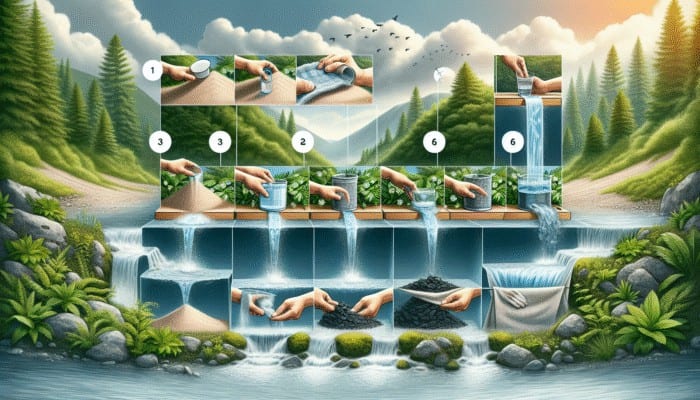



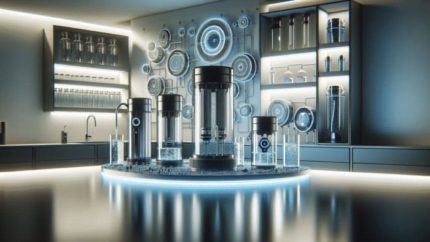

I really appreciate this practical approach to water filtration, as access to clean drinking water is such a crucial issue, especially in rural areas. By using simple materials like sand and charcoal, you’re not only promoting self-sufficiency but also empowering communities to tackle their own water crises.
Your exploration of DIY water filtration techniques is incredibly timely and relevant, especially considering the ongoing global challenges surrounding clean water access. I appreciate how the sand and charcoal filter method emphasizes the idea that effective solutions can be both simple and achievable. This resonates deeply with the principles of sustainability and self-sufficiency, which are increasingly important in today’s world.
Constructing a sand and charcoal water filter really opens up an important conversation about resourcefulness and sustainability, especially in areas where clean water is scarce. I love the idea of using such simple materials to tackle a critical issue—it’s a great reminder that often the best solutions come from local ingenuity rather than complex technology.
I love the practicality of your sand and charcoal filter technique! It’s a fantastic example of how simple methods can address significant problems like water access. In my experience working with communities in rural areas, I’ve seen how these DIY solutions can empower individuals to take charge of their health. It’s fascinating how something as readily available as sand and charcoal can profoundly impact daily life.
Your exploration of constructing a sand and charcoal water filter truly highlights a practical approach to an ever-pressing issue: access to clean drinking water. It’s fascinating to think about how such a simple, cost-effective method can have a profound impact on health and wellness, particularly in rural communities where infrastructure may be lacking.